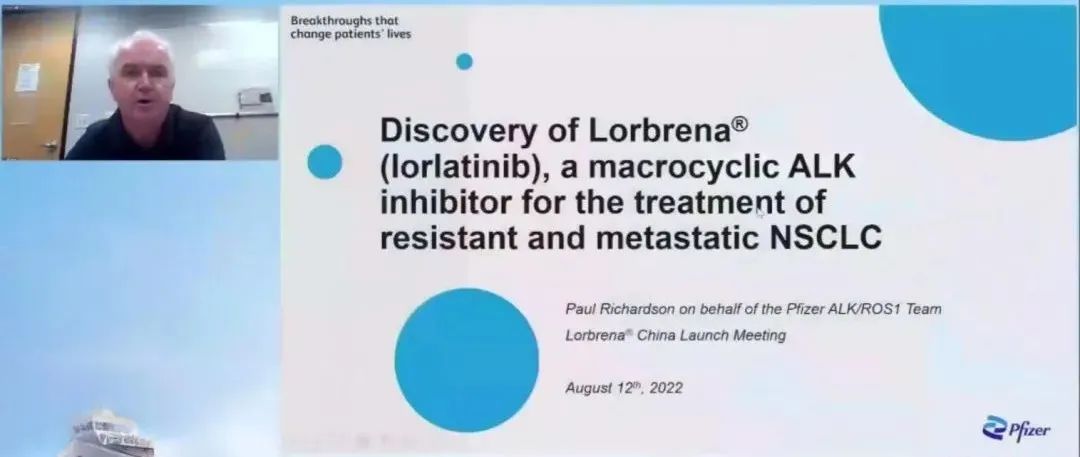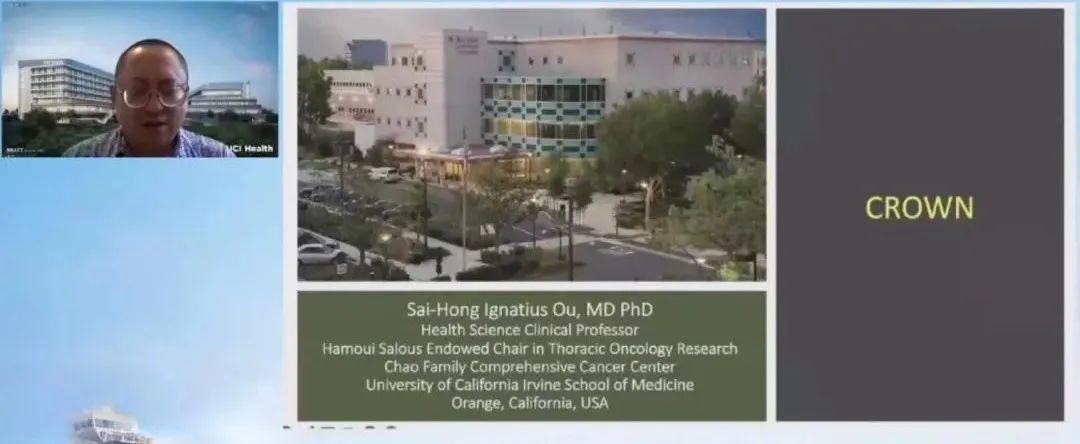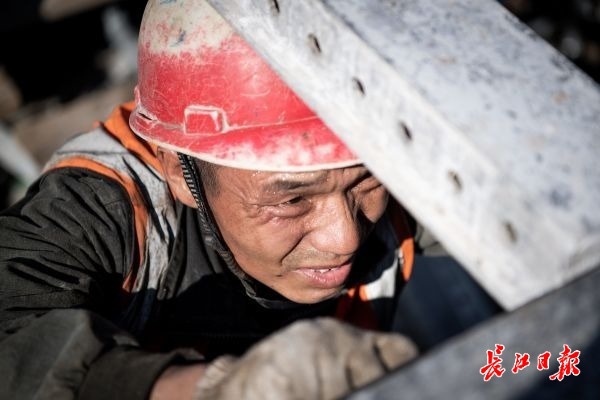Lolatinib was successfully held, and lung cancer "diamond mutation" ALK ushered in targeted therapy "new king"!
Author:Cancer Channel of the Medical Time:2022.08.16
*For medical professionals for reading reference

The third -generation Alk inhibitor is here!
Among the many treatment targets of non -small cell lung carcinoma (NSCLC), interstitial lymphoma kinase (ALK) has been attracted much attention, especially after the typosin kinase inhibitors (TKI) targeted drugs have achieved good results, many of them have been made, and many of them are allowed After patients with durable condition and long -term survival, ALK has the "diamond mutation" in NSCLC, and TKI targeted drugs are still developing and progressing Significant benefit.
On August 13, 2022, the third-generation ALK-TKI-targeted Pulletininib (product name: Bornener) China listing of the third-generation Alk-TKI class developed by Pfizer Pharmaceutical was held. Set up the main venue, and also set up branch venues in other 12 cities across the country. Many well -known lung cancer diagnosis and treatment experts from all over the country attended the meeting in a combination of online and offline, witnessing Lolatinib's official time in China! Participating experts reviewed the research and development process and clinical research performance of Lolatinib, and in -depth discussions on the opportunities and challenges of ALK -positive NSCLC management.
""
Professor Wu Yilong, Honorary Director of the Institute of Lung Cancer in Guangdong Province, said: "According to the clinical research data released by the American Cancer Research Society (AACR), Lolatini first -line therapy ALK -positive NSCLC's median no progressive survival (PFS) exceeded three years through three years , And the curve tends to be flat, it is expected to obtain longer median PFS. Patients with measurement of brain metastases for baselines can achieve higher intracranial alleviation rates. Tetinib treatment can significantly reduce the risk of intracranial progress and effectively prevent brain metastases. And, Lolainib is the only ALK inhibitor that has decreased by more than 70%of the risk of disease in the whole population or the risk of death. "
Professor Lu Shun, the director of Shanghai Jiaotong University's Chemical Hospital and the Director of the Shanghai Cancer Clinical Medicine Center of Shanghai, also said: "Lolatinib brings to patients' benefits is beyond doubt. Further landing, doctors will obtain more clinical treatment options. In the future, the front -line treatment structure of Chinese ALK -positive NSCLC is expected to be rewritten. Lolatini is expected to become ALK -positive late NSCLC first -line treatment, bringing high -quality life extension to patients! "
"


Classes are classic, from evidence of evidence
See how Lollaotini achieves the best effect
Professor Paul Richardson from Pfizer first reviewed the research and development process of Lollainib. ALK gene mutation has been clearly confirmed as a driving gene mutations for cancer. The targeted drug of ALK mutation -Kizinib, which is developed by Pfizer and has been widely recognized and applied worldwide. However, Kizotinib has also encountered problems such as treatment resistance. In response to the known mutations of known drug resistance, poor ability to cross the blood brain barrier, and limited brain metastases, the development of the new generation ALK inhibitor was raised by the research and development of the ALK inhibitor. I went to the agenda.

Unlike the first and second-generation Alk-TKI, the birth of Loladinib originated from the excellent "structured drug-based drug design" strategy. Using the large -ring structure, this not only enables Lollaotinib to be highly selectively combined with ALK kinase, but also effectively targets all Kazotininib to resist with ALK L1196M, G1202R, while crossing the blood -brain barrier at the same time His ability is also very good, and it also effectively avoids the toxicity of excessive central nervous system. It has fully achieved design goals in preclinical studies, and shows excellent strength in clinical research.
Professor Sai-Hong Ignatius OU of the University of California, the University of California, also interpreted the related situation of CROWN for the registered clinical III study of Loladinib for ALK-positive NSCLC first-line therapy. The advent of ALK-TKI and other ALK-TKIs such as Kizotini greatly improved the overall prognosis of ALK-positive NSCLC patients. Alk-TKI has also become a general recommended first-line treatment plan in the world. ALK-TKI, which is more effective and can overcome drug resistance, and Lolatinib has these advantages.

At the AACR annual meeting in 2022, the updated CROWN research efficacy data was amazing: the median no progressive survival (PFS) of the Lolatinib treatment group (PFS) did not reach the median follow -up of 36.7 months, and the PFS risk ratio ( HR) The value is only 0.27, and Professor OU predicts that this means that the median PFS of Lolatinib may exceed 60 months. The benefits of first -line therapy are significantly better than TKI -sequential treatment models such as "1+3" and "2+3". At the same time, the duration duration of Lolatinib treatment, the effect of the brain metastases, and even brain protection effect are significantly better than that of the Kizotinib. The treatment of related adverse events is also controllable.
In the discussion of the "China -Foreign Peak Dialogue", the two foreign coffees started wonderful discussions with domestic experts and put forward the following points:
1. Lolatinib can not only efficiently cross the blood -brain barrier, but also take special considerations in the design of the drug molecular, reduce the toxicity of the central nervous system, and obtain the balance of curative effect and toxicity. 2. There are differences in the drug-resistant mechanism of the first-line application of Lolatinib, but the benefits of the existing ALK-TKI for second-line therapy are not significant. PFS2 is only 5-7 months. Therefore, first-line treatment should be preferred. Choose the longest Loladinib with PFS1.
3. Regardless of the patient's EML4-ALK fusion variant type, Lolatinib therapy has clear benefits.
4. Although ALK -positive lung cancer is mostly diagnosed in advanced stage, research on the new generation Alk TKI assisted and new assisted research is very worthy of exploring.
Based on clinical practice, Lolatinib
In the full management of ALK -positive lung cancer, it will be important
Professor Song Yong, an affiliated to Nanjing University School of Medicine, analyzed Alk's positive late NSCLC treatment current opportunities and challenges in my country. ALK -positive NSCLC accounts for about 5.5%of the patients with lung cancer in my country. Since the approval of Kraminib, the precise treatment of TKI targeted drugs has greatly improved the prognosis of patients. A series of problems such as limited efficacy of PFS, multiple drug -resistant mutations, and limited intracranial efficacy must be faced.
Therefore, ALK -positive NSCLC's targeted therapy is opportunities and challenges, and Lolatinib shows the ultra -long PFS and excellent brain effects in the CROWN research. Lolatinib opened the "3.0 era" of ALK -targeted therapy, allowing ALK -positive lung cancer towards chronic diseases and even clinical cure.
Professor Wu Lin, Hunan Cancer Hospital, proced on the advantages of Loladinib's intracranial efficacy and interpreted the role of Lolatini in the full management of ALK -positive lung cancer patients. The central nervous system (CNS) metastasis is one of the most common distant metastasis in the late NSCLC, which will greatly affect the survival and quality of life of patients. The CNS transfer of ALK -positive NSCLC is more common and runs through the entire course. Control CNS transfer is the target target target The elements that must be considered in treatment.

Compared with traditional chemotherapy and first/second-generation ALK-TKI, Lolatinib has a comprehensive effect on the efficacy of CNS transfer. Patients' intracranial progress risk within 3 years is reduced by 92%(HR = HR = HR = 0.08), when the baseline can be measured by patients with measuring the baseline, the intracranial relief rate reaches 83.3%, of which the intracranial alleviation rate is as high as 72.2%. The intracranial progress rate is as high as 99.1%, so Lolatini will also fully rewrite the treatment pattern of Alk -positive CNS transfer.

In the discussion session of "Clinical Practice", the clinical application of the participating experts Lorochinib exchanged the following opinions and experiences:
1. In the decision of ALK -positive NSCLC first -line treatment, Lolatinib's effectiveness, PFS and intracranial efficacy are no doubt, but Loladinib has just been listed in China and still needs to accumulate more security data. At the same time, it is hoped that Lolatinib can enter medical insurance as soon as possible, reduce patients and economic burdens, and benefit more patients.
2.ALK -positive lung cancer is expected to achieve chronic disease management, and multi -disciplinary management will play an important role. For example, psychiatry can discover and interfere with the bad emotions and mental symptoms of cancer patients. Vascular complications also require corresponding specialist intervention, and local treatment such as radiotherapy still has an important role.
Combined with the clinical value and pharmaceutical economics of innovative drugs,
Look at Alk-TKI clinical decision
Professor Pan Yueyin, the First Affiliated Hospital of the University of Science and Technology of China, introduced the evaluation of Loladinib based on the perspective of drug economics. Compared with the second-generation Alk-TKI, the first-line treatment It can bring a significant quality adjustment of the benefits of life (QALY). At the same time, in order to achieve better drug economics benefits, Pfizer also works with all walks of life to improve the availability of drugs in the form of benefit of civil insurance and innovative payment projects. Reduce the economic burden of patients and let more patients use the best ALK-TKI drugs at the moment.
Combined with the analysis of the pharmaceutical economics of Lolatinib, the participating experts jointly discussed the exploration and future outlook of anti -tumor innovation drugs in terms of payment model, in order to further reduce the burden of treatment for patients:

1. Considering that in charity and other policies, patients with good treatment and long survival time can increase their assistance, and use policies such as "dual channels" and benefiting civil insurance as supplements to obtain drugs in the hospital.
2. The use of the same drug as long as possible for the first -line treatment is an effective strategy for reducing the burden on patients. It is expected that Lolainib will be included in the medical insurance as soon as possible to reduce the burden on the treatment for patients.
At the conference, the "ALK Patient Education Support Project" supported by Pfizer was officially launched. Through a one -stop digital platform, it provided patients with communication channels, education science and popularization projects, and other diversified services to improve the awareness of standardized diagnosis and treatment, thereby enhancing patient treatment for treatment Prognosis of compliance and process treatment. At the same time, the project also helps to promote the accumulation of doctors' standardized management and real clinical data of patients, and promote the improvement of the level of diagnosis and treatment of NSCLC in my country.
*This article is only used to provide scientific information to medical people, and does not represent the viewpoint of this platform


- END -
Used to high -temperature weather operations, the construction worker lamented "now construction is more humane"

The Yangtze River Daily Da Wuhan client July 10th. Our construction site, it is no...
A magnitude 7.0 earthquake in the Philippines has died of 5 people.
[Global Times special reporter Huang Dongxing in the Philippines] At 8:43 on the 27th, a magnitude 7.0 earthquake occurred in Luzon Island in northern Philippines. Manila, the capital of the Philippin